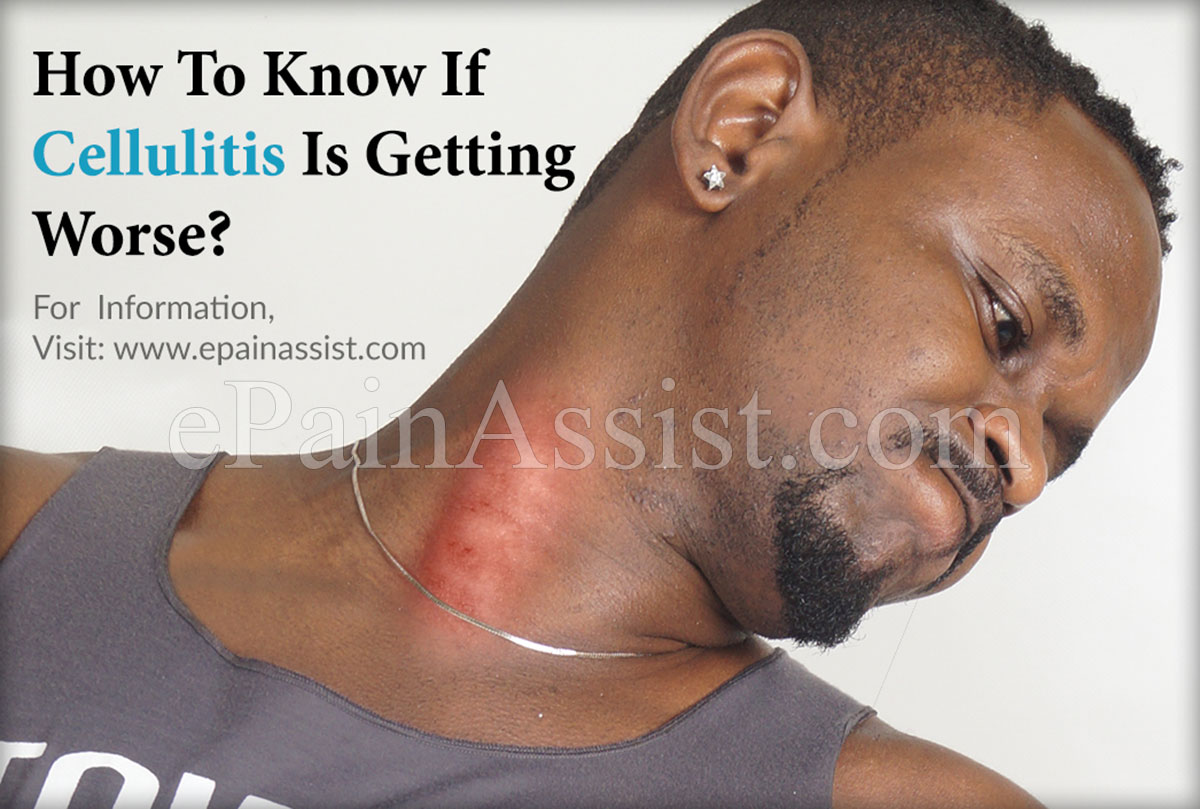About Cellulitis
Cellulitis is a bacterial skin infection that arises when the Strep or the Staph bacteria infiltrates the skin through cuts, bruises, or insect bites. The bacteria after infiltrating the skin grow and cause redness, swelling, and tenderness in the affected area causing an infection. In most cases, cellulitis is mild and goes away with antibiotic treatment within a span of a week or 10 days. However, if this condition is left untreated then it may lead to potentially serious complications and thus it is recommended for individuals with cellulitis to undergo a complete course of antibiotics even if the symptoms start to disappear to prevent the infection from recurring.

How To Know If Cellulitis Is Getting Worse?
In order to know whether cellulitis is getting better or worse it is advisable for the patient to check the skin. In case if the patient has increased redness of the skin, red streaks on the skin, increased warmth in the affected area along with swelling and tenderness then it can be said that cellulitis is worsening.
Additionally, cellulitis is said to be worsening if there is drainage from the skin and there are circulation problems indicated by skin discoloration. In case along with the above mentioned symptoms, if an individual has high grade fever with chills along with nausea and vomiting then it is a sign that cellulitis is worsening.
Also, if there is excessive hardening of the affected region, severe pain, or formation of blisters with pus then it is yet another sign of cellulitis worsening. An individual with worsening cellulitis will also have numbness in the affected region or presence of a blackened area which is swollen and warm.
In case if the eyes are involved and the individual has vision disturbance or blindness then it is yet another sign of worsening of cellulitis. Worsening cellulitis around the ear will cause problems with hearing.
Also Read:
- Facial Cellulitis: Causes, Risk Factors, Signs, Symptoms, Investigations, Treatment
- Cellulitis: Causes, Risk Factors, Symptoms, Investigations, Treatment, Prevention
- 13 Home Remedies to Get Rid of Cellulite from Thighs
- How Long Does Cellulitis Last & 11 Home Remedies to Get Rid of it
- Is Cellulitis Itchy?
- How Long Does it take to Recover From Cellulitis?|Is Cellulitis Dangerous?
- Healing Stages of Cellulitis
